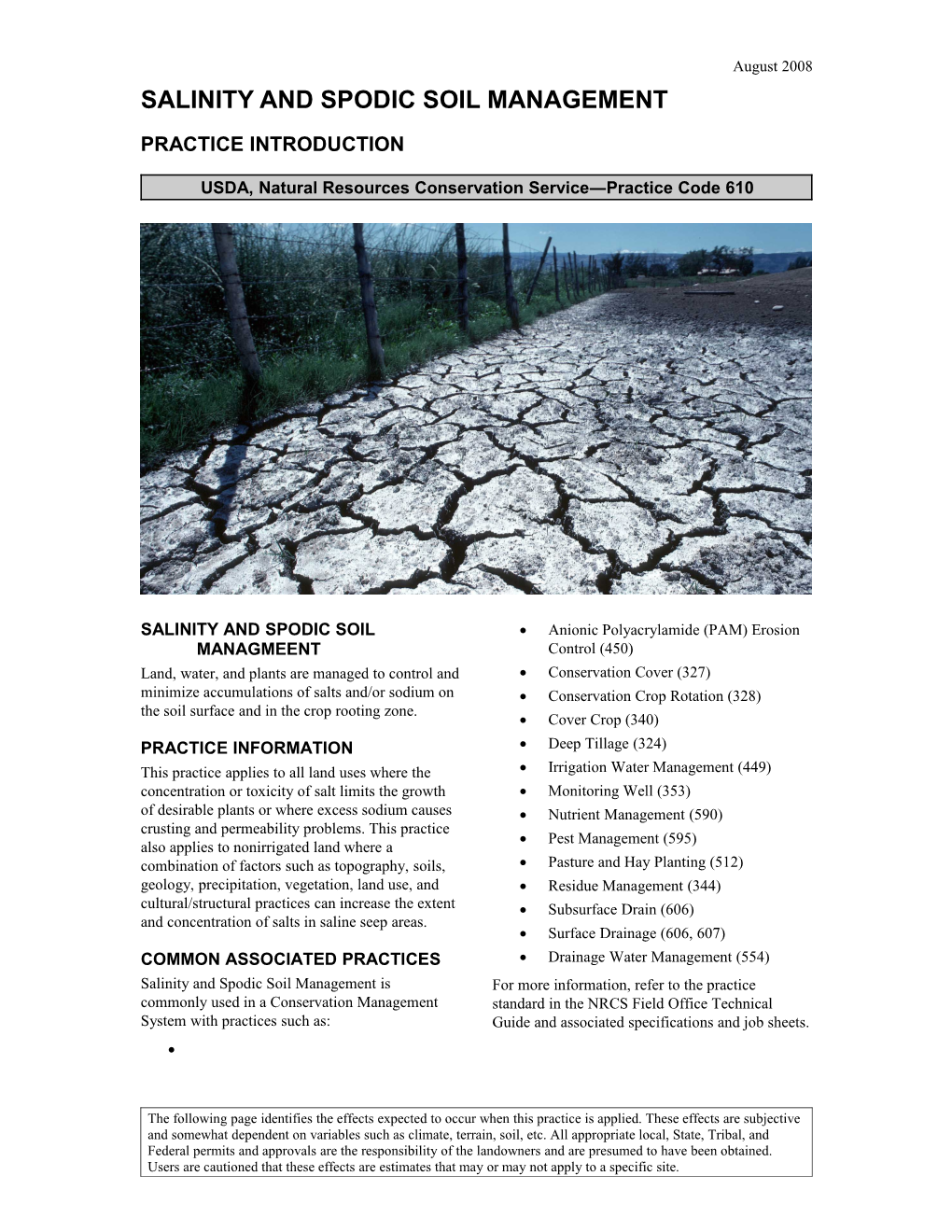August 2008
SALINITY AND SPODIC SOIL MANAGEMENT
PRACTICE INTRODUCTION
USDA, Natural Resources Conservation Service―Practice Code610
The following page identifies the effects expected to occur when this practice is applied.These effects are subjective and somewhat dependent on variables such as climate, terrain, soil, etc.All appropriate local, State, Tribal, and Federal permits and approvals are the responsibility of the landowners and are presumed to have been obtained.Users are cautioned that these effects are estimates that may or may not apply to a specific site.
August 2008
The following page identifies the effects expected to occur when this practice is applied.These effects are subjective and somewhat dependent on variables such as climate, terrain, soil, etc.All appropriate local, State, Tribal, and Federal permits and approvals are the responsibility of the landowners and are presumed to have been obtained.Users are cautioned that these effects are estimates that may or may not apply to a specific site.
August 2008
SALINITY AND SPODIC SOIL MANAGMEENT
Land, water, and plants are managed to control and minimize accumulations of salts and/or sodium on the soil surface and in the crop rooting zone.
PRACTICE INFORMATION
This practice applies to all land uses where the concentration or toxicity of salt limits the growth of desirable plants or where excess sodium causes crusting and permeability problems.This practice also applies to nonirrigated land where a combination of factors such as topography, soils, geology, precipitation, vegetation, land use, and cultural/structural practices can increase the extent and concentration of salts in saline seep areas.
COMMON ASSOCIATED PRACTICES
Salinity and Spodic Soil Management is commonly used in a Conservation Management System with practices such as:
- Anionic Polyacrylamide (PAM) Erosion Control (450)
- Conservation Cover (327)
- Conservation Crop Rotation (328)
- Cover Crop (340)
- Deep Tillage (324)
- Irrigation Water Management (449)
- Monitoring Well (353)
- Nutrient Management (590)
- PestManagement (595)
- Pasture and Hay Planting (512)
- Residue Management (344)
- Subsurface Drain (606)
- Surface Drainage (606, 607)
- Drainage Water Management (554)
For more information, refer to the practice standard in the NRCS Field Office Technical Guide and associated specifications and job sheets.
The following page identifies the effects expected to occur when this practice is applied.These effects are subjective and somewhat dependent on variables such as climate, terrain, soil, etc.All appropriate local, State, Tribal, and Federal permits and approvals are the responsibility of the landowners and are presumed to have been obtained.Users are cautioned that these effects are estimates that may or may not apply to a specific site.
The diagram above identifies the effects expected to occur when this practice is applied according to NRCS practice standards and specifications. These effects are subjective and somewhat dependent on variables such as climate, terrain, soil, etc. All appropriate local, State, Tribal, and Federal permits and approvals are the responsibility of the landowners and are presumed to have been obtained. All income changes are partially dependent upon market fluctuations which are independent of the conservation practices. Users are cautioned that these effects are estimates that may or may not apply to a specific site.
